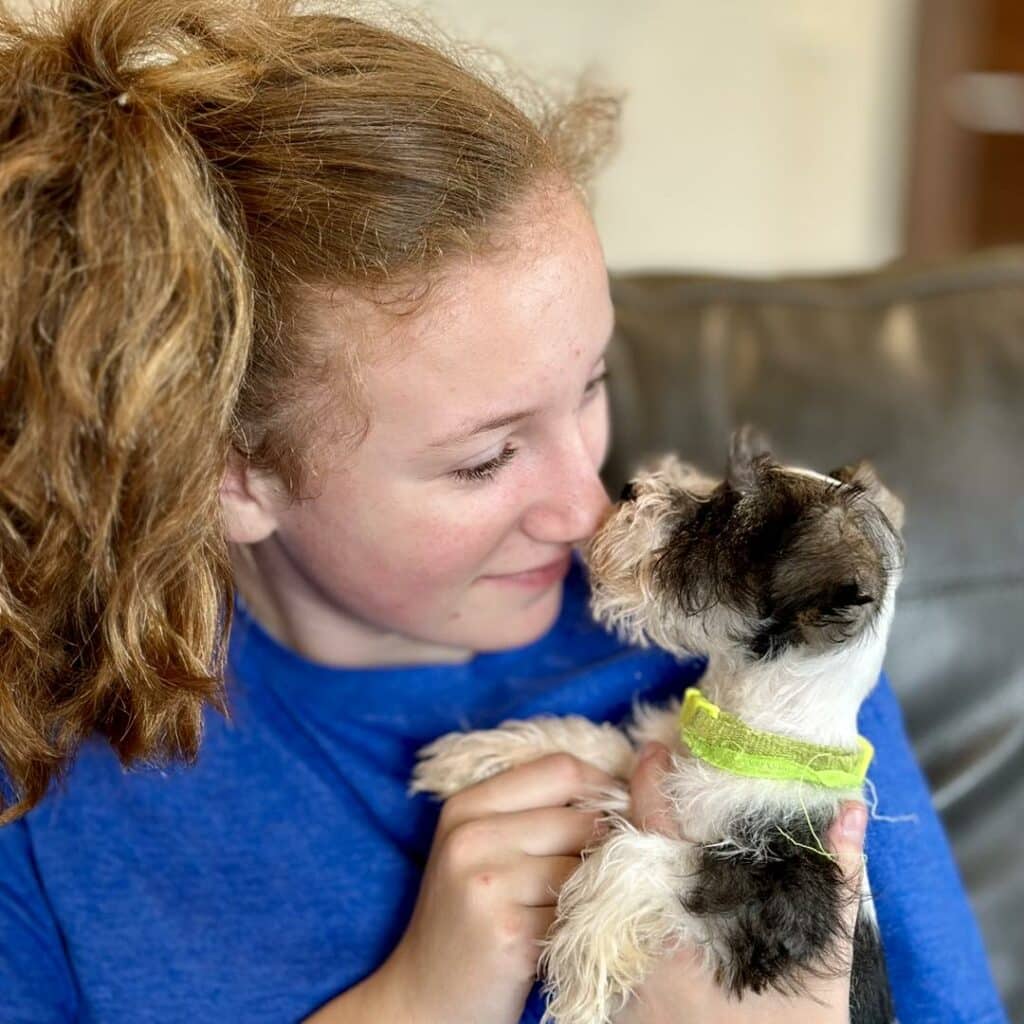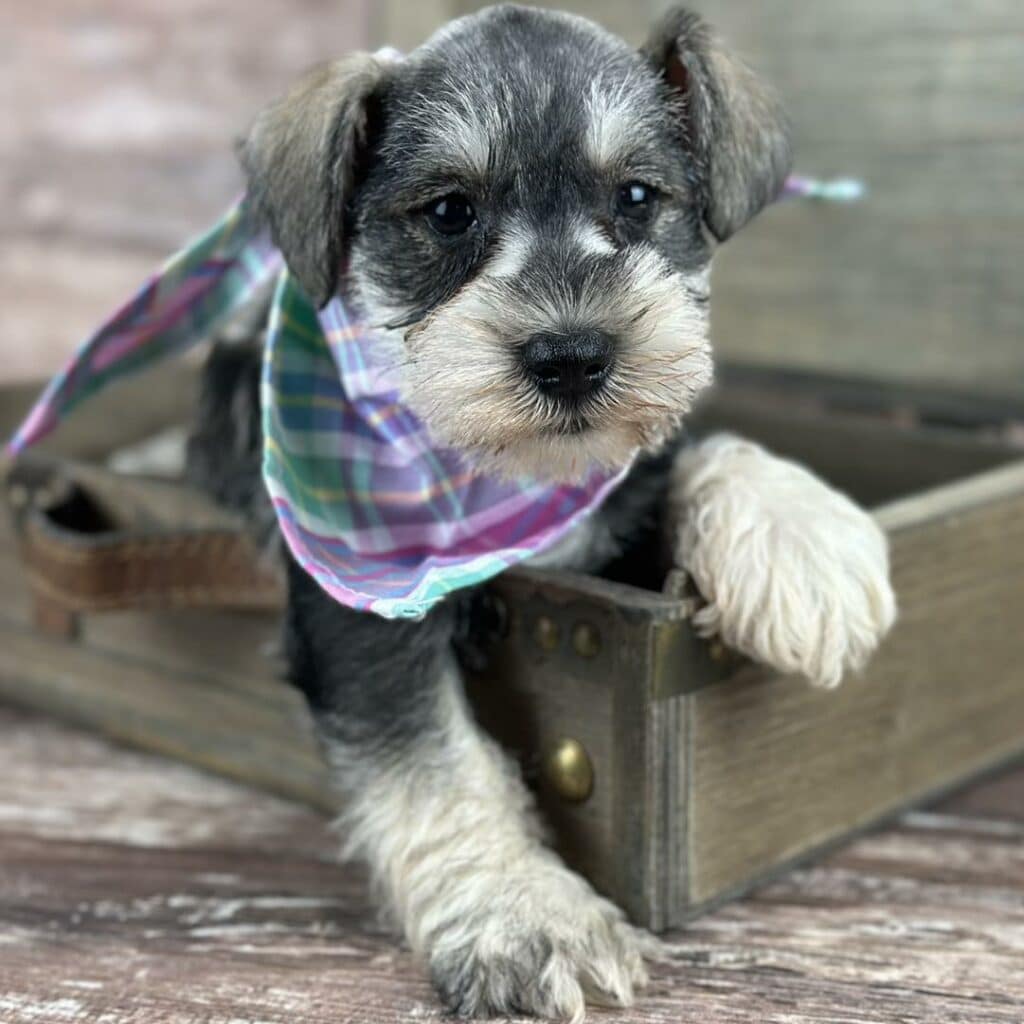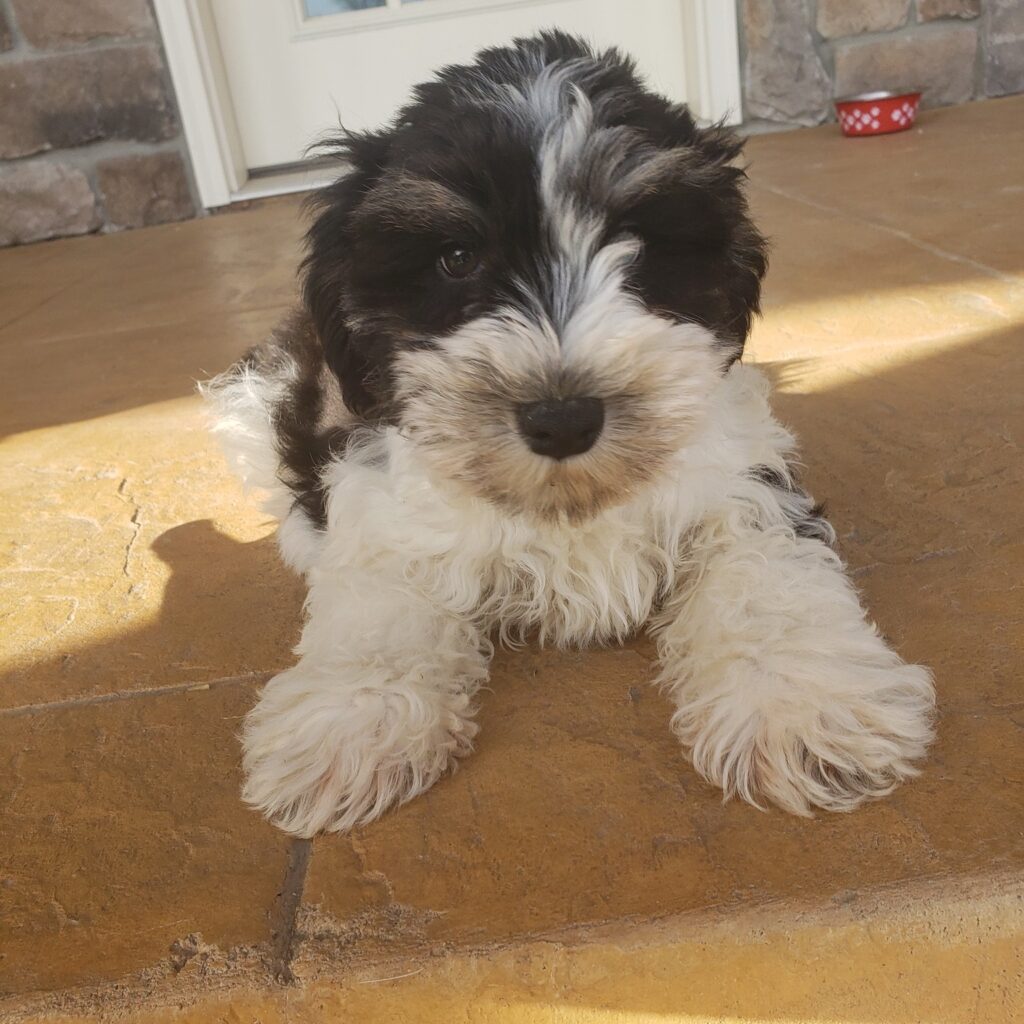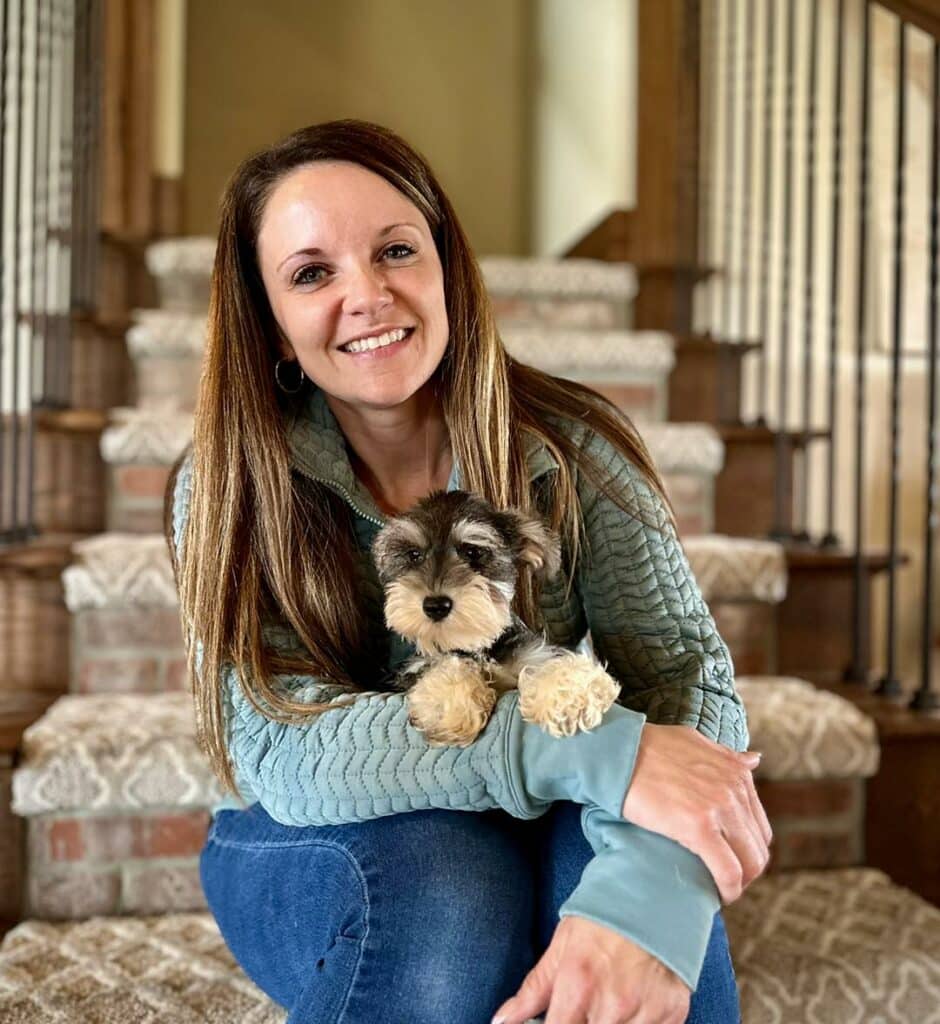



How To Train Your Schnauzer Puppy Not to Bite
You’ve taken your adorable miniature schnauzer home. And you and the family are enjoying every moment of the cuddles and their playful demeanor. However, in all the excitement, you start to notice your puppy is biting. We don’t want you to be too alarmed, as biting is normal. However, training our schnauzer puppy not to bite is something we as puppy owners have to take seriously so it doesn’t continue.
Why Do Puppies Bite?

The key thing to remember here is that puppies are not biting maliciously. For the most part, a puppy’s biting isn’t intended to be aggressive, but rather playful. They explore their world through their mouths and will chew or bite unfamiliar objects until they are taught otherwise.
Zak George is a famous YouTuber with more than 3.5 million subscribers. His channel is on how to be a successful dog trainer that focuses on new ways to train dogs, versus the old and ineffective ways.
Let’s look at the two reasons Zak shares on why puppies bite: they are teething or they are trying to engage the world.
Puppy Teething
Schnauzers will begin teething at about four months old (between 16-20 weeks.) So, we need to be prepared for the biting early on. Just as a newborn baby may constantly chew on their bottle or fuss because of the pain, your schnauzer puppy will do the same.
It’s best to have some appropriate toys for them so that they can focus on chewing the toys, rather than biting your skin.
Puppy Engagement
As you can imagine, your puppy wants your attention. This is why they may struggle with things such as excessive barking or separation anxiety when you leave. And so they may playfully bite as a way to get you to interact with them. This circles back to our beginning comment that puppies have no malicious intent in biting. Sometimes, they just want our attention.
Puppies will also bite their littermates as a part of natural play. If they bite too hard, the other puppies will yelp sharply to let them know it hurts. Even though it’s playful, it’s not a behavior you want your schnauzer to continue.
So if you consistently let the puppy know that biting is not a tolerated part of play, they will quickly learn not to bite. This means that if you know how to train your miniature schnauzer puppy not to bite, and you use the no-bite rule consistently, there should be no problems in your no-bite training. (We’ll dive more into this rule later.)
Is It a Problem If My Puppy Bites?

Okay, let’s not try to pretend that a puppy biting isn’t adorable because it can be. Their tiny little teeth and the adorable growl they do can send you into a fit of laughter. However, we encourage you to get out of the awe phase with puppy biting quickly.
Because, if it’s not dealt with properly, biting can become a serious problem for a miniature schnauzer in its new home. This includes guests, neighborhood children, or even delivery drivers. That’s why it’s best to train your puppy not to bite before their behavior gets too far.
Puppy Biting – What Not To Do

Before we dive into the training techniques that we love to use here at Fernweh Minature Schnauzers, we want to share what NOT to do when training your puppy not to bite. The following four “do not’s” are common things you will find on the internet that sometimes owners will do. We want to steer clear of these.
- Don’t yell or scream at your puppy: This can easily be very confusing for the puppy. They will be so afraid of the yelling that they can’t understand what you want them to do.
- Don’t lift your hand like you’re going to hit them: Physical violence is never the answer in training. The goal isn’t to get your puppy to fear you because you will inflict pain on them.
- Don’t bite them back: As humorous as this may sound, yes there are people who do this. All this does is focus on the biting, and not on the solution to fix it.
- Don’t use collars: The Humane Society of the United States shares the gross negligence of using shock collars for dogs in training. “While they may suppress unwanted behavior, they do not teach a dog what you would like them to do instead and therefore should not be used.” Our desire is not just to teach our miniature schnauzer not to bite. But, also to show them what is acceptable for them to do instead.
Now that we know some things not to do when training our schnauzer puppy, let’s look at some methods of training that work well for puppy biting.
Training Techniques for Puppy Biting

As miniature schnauzer breeders, we have been through it all. We’ve learned the ups and downs of puppy biting. And we’ve seen what works well and doesn’t.
One of the questions we get asked the most is “How do you train your puppy to actually stop biting?” We use a strict no-bite rule for all of our puppies because puppies need to learn from early on that biting people is not acceptable.
Perhaps you’ve told your puppy “no biting” 29 times today, and it doesn’t seem to be registering. Well don’t be discouraged, we understand how overwhelming it can get.
The below techniques are ones that we personally use to train our miniature schnauzer puppies not to bite. Of course, this isn’t an exhaustive list of all that we do. But, we hope that you will find these useful to your puppy’s training.
- The puppy tries to bite\chew your hand
- Yell “Ouch!” sharply. This will startle the puppy in realizing you were hurt. Because its littermates did the same, your puppy will understand that this is unacceptable play.
- The puppy has your hand in its mouth
- Point your finger at them and firmly say “Stop!” in a low voice. The Veterinary Centers of America points out that, “If your tone reflects pleasure, love, sadness, disappointment, or worry, your dog will pick up on it.”
- Play with toys
- This gives your puppy something to chew on and keeps your hands safe. Zak George in the YouTube video shared at the top suggests always having a toy in your hand when you go to play with your puppy. This gives them something to immediately bite versus biting you as a playful tactic.
- Never rough house with a puppy prone to biting
- For those puppies who struggle with biting, rough play will only encourage them to bite even more. The American Kennel Club shares that we don’t want to instigate them to let loose by roughhousing. While rough play might be fun, for a training puppy it can be detrimental to their development.
- Put the puppy in a time-out for biting
- To put it quite plainly, biting means playtime is over. A puppy time-out can start at 20 seconds and go up to two minutes. This should include you walking away as well. The trick here is not to be angry at your schnauzer. But, to show them through a time-out on playtime that biting is not acceptable behavior.
- Use positive reinforcement
- Praise your puppy if it plays with you without biting, or releases your hand on command. Also, remember that positive reinforcement is not just saying “good boy\girl.” But, rather you are showing them with an added action that this is the right behavior (rubbing their belly, giving them a treat, getting down on their level to interact, etc.)
Every miniature schnauzer puppy is different. It can take them anywhere from a week to a few weeks to learn that biting people is bad. Make sure to stick with the techniques that are working well for your puppy. And the methods that aren’t working well, ditch them and try a new one.
A little love and a whole lot of patience will get you through this training. Follow our blog for more tips on raising your schnauzer!
